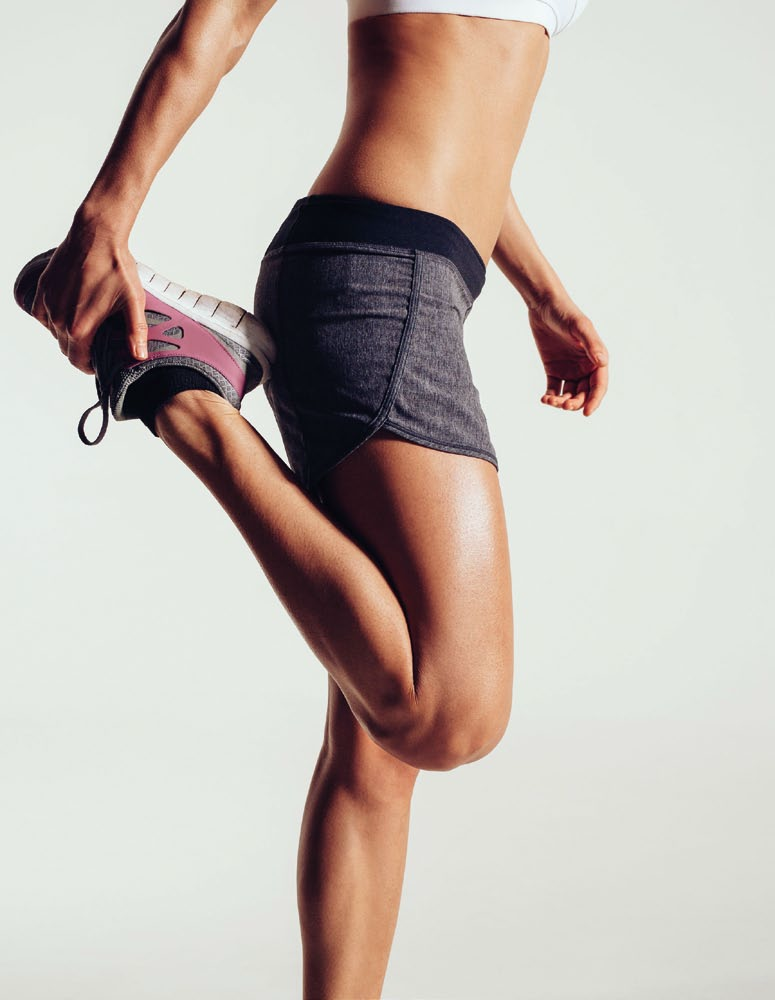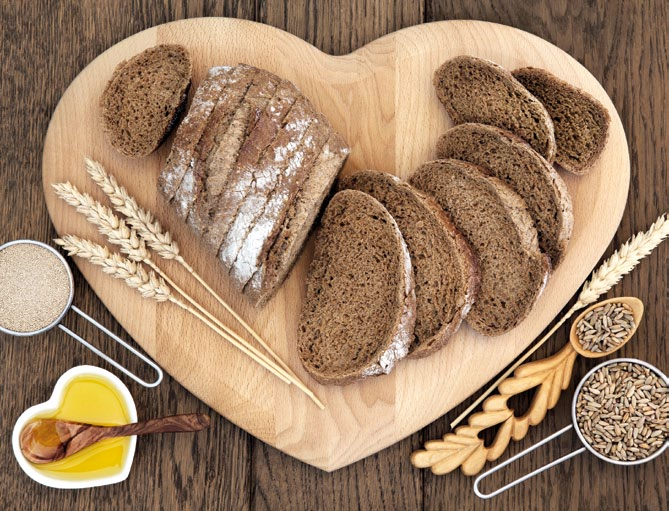Having problems reducing that tummy bulge? Take a look at some of the potential culprits and try out the solutions – you may be surprised with the outcome.



Having problems reducing that tummy bulge? Take a look at some of the potential culprits and try out the solutions – you may be surprised with the outcome
Be warned – you may be concealing toxic fat if you are carrying extra weight around your tummy. This is a sure sign that you also have fats deep inside the belly and around your organs. This is a danger sign as the visceral fat, that’s what it’s called, releases toxic chemicals which increases the risk of health problems like heart disease, type 2 diabetes and some cancers. The more belly fat you can see, the greater the health risks for sure as the odds that some of it is visceral fat is greater.
If you’ve been struggling to lose those stubborn belly fat, you might be happy to know that it is possible. Understand the contributing factors and try to tackle some of these issues.
PROBLEM NO 1:
{Stress}
Cortisol, the stress hormone, can add centimetres to your waistline.
Professor John Dixon, head of Clinical Obesity Research at Baker IDI Heart Diabetes Institute, explains, “In the hunter-gatherer world, when we were under stress, we needed more belly fat to keep us going.” That surge in cortisol and increase in belly fat provided a ready energy source if our fight or flight response needed to kick in.
And unfortunately, stress has the same effect on our body today. Even if you are normally slim, when you get stressed you’ll release more cortisol – and gain more belly fat – than those who don’t stress so easily.
Solution: Find ways to relax and manage your stress levels. Meditate, go for a walk, listen to music or talk with a friend.
PROBLEM NO 2:
{Feeling Blue}
Nicole Vogelzangs from the VU University Medical Center in the Netherlands, says that depression will create chemical changes such as a rise in cortisol and other inflammatory chemicals that contribute to belly fat.
So if you are depressed it’s more likely that you will struggle to manage your weight and any excess weight will gather around the middle.
Solution: If you suspect you are depressed, speak to your GP. Treatment may include exercise, better sleep, connecting with family and friends, and sometimes antidepressant medication.

PROBLEM NO 3:
{Irregular Meals}
Eating only once a day or skipping meals can trigger changes in our metabolism and associated problems like insulin resistance and type 2 diabetes.
“You definitely don’t want to skip meals to save calories because it sets your body up for larger fluctuations in insulin and glucose, and could be setting you up for more fat gain instead of fat loss,” says US-based human nutrition researcher Professor Martha Belury.
Solution: Eat three healthy meals a day to keep your metabolism going.

PROBLEM NO 4:
{Not A Fan Of Yoga}
If you’re overweight with a body mass index (BMI) of 30+ and want to lose belly fat, head to a yoga class.
In one study, women with a 30+ BMI lost more fat with regular yoga sessions than with a stretching programme. This could be because yoga helps you to relax and reduces those stress hormones like cortisol that increase belly fat.
Solution: Any physical activity and exercise is good for general health, but try to fit in a weekly yoga session as well.
PROBLEM NO 5:
{No Interval Training}
High-intensity interval training (HIIT) involves repeated bouts of sprinting or other activities at maximum intensity, followed by a period of low-intensity exercises or cardio workouts.
Most often this is done using a stationary bike. “It takes just six weeks of interval sprinting exercise to see a significant reduction in waist circumference,” says Dr Stephen Boutcher, author of Belly Fat Breakthrough.
Solution: If you haven’t exercised for a while, speak to your GP first but a typical HIIT program could be a 20-minute session of hard cycling for 8 seconds, cycling slowly for 12 seconds, cycling hard again for 8 seconds and so on. Aim for 20 minutes three times a week. You could reduce your waist circumference by between six and 14 per cent over the course of six weeks.
PROBLEM NO 6:
{Like Diet Soft Drinks}
Contrary to popular belief, if you drink diet soft drinks every day you’re four times more likely to see your waistline expand.
Professor Dixon says this is because some artificial sweeteners change gut bacteria and this change increases fat around the stomach. “We can’t absorb the sweet components in these drinks and they change gut bacteria. This leads to more fat absorption from food,” he explains.
Solution: Limit diet soft drinks and instead drink still or mineral water with a slice of lime or lemon.
PROBLEM NO 7:
{Only Exercise Is Sit-Ups}
Unfortunately, doing sit-ups alone will not get rid of belly fat.
Research involving people who did either regular exercise or abdominal exercise – such as sit-ups – found those who only exercised their stomach lost no more belly fat than the general exercise group.
Professor Dixon says, “You can tone up your abdominal muscles, but no specific exercise will burn abdominal fat. People dream of it but nothing does that specifically.”
Solution: Sit-ups build core strength, so best to keep at it. This helps to improve balance and stability and reduces the risk of falls and painful back injuries. But do aerobic exercise to shed belly fat as it burns more calories – try cycling, jogging, swimming and power walking.

PROBLEM NO 8:
{Consume Food With Saturated Fat}
The type of fat in your food has an impact on where excess body fat is stored.
Saturated fats – mostly animal fats – “turn on” genes in fatty tissues that increase storage around the stomach and liver. Palm oil is also very high in saturated fat and is often used in supermarket-bought baked goods. Healthier polyunsaturated fats – from plant foods and oily fish – do the opposite and actually switch on genes in fatty tissues that reduce fat storage.
Solution: Replace saturated fats from meat, butter and products containing palm oil with unsaturated fats from plant oils and oily fish. Eat less butter and switch to eating more nuts, olive oil, avocado, salmon and tuna.
PROBLEM NO 9:
{Do Not Like Wholegrain}
If you prefer foods like non-wholegrain bread and pasta, and white rice – you’re likely to have a larger waist.
This is because foods like white bread quickly raise blood sugar levels, which can cause insulin resistance and lead to storage of excess fat in the abdominal area.
“Simple carbohydrates, like honey, table sugar or white bread are rapidly digested and if you don’t burn them off, you store them as fat,” says McGuckin.
Solution: Reduce white foods in your diet and choose fruit and vegetables, high-fibre cereals , dairy foods, brown rice and wholegrain bread.

PROBLEM NO 10:
{ Like Alcohol}
Alcohol consumption is on the rise and women are drinking more than ever.
“If you limit your alcohol intake to one or two glasses of wine and maintain a healthy weight, it won’t be an issue,” says Lauren McGukin, spokesperson for the Dietitians Association of Australia. “But if you have a higher energy diet, low-physical activity and put alcohol on top – all that contributes to fat accumulation.”
Solution: It is recommended that you should have no more than two standard drinks on any day, with two alcohol-free days a week.

PROBLEM NO 11:
{Lack Magnesium}
Magnesium is vital as it helps to keep blood sugar levels under control and to prevent insulin resistance, both of which can lead to type 2 diabetes.
It’s important to include plenty of magnesiumrich foods in your diet as blood-sugar problems and insulin resistance can lead to an accumulation of fat around the abdomen.
Solution: Women need around 320 mg of magnesium a day from the age of 30 for general health and to help control blood sugar levels as well as prevent insulin resistance. Foods such as leafy green vegetables, wholegrains like brown rice or wholemeal bread, and nuts and seeds are good sources. A small handful (30 g) of roasted almonds contains 80 mg, two slices of wholemeal bread contain 46 mg and a quarter cup of sunflower seeds provides 114 mg.























